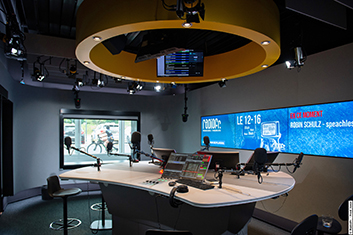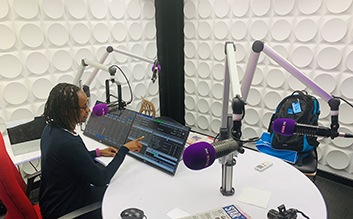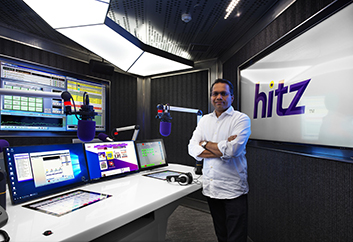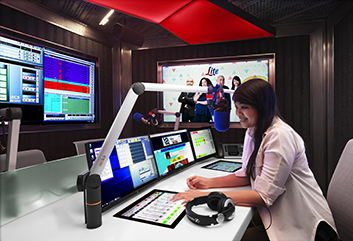
When broadcasters begin to discuss building studios using AoIP, the subject turns rather quickly to esoteric engineering topics like switch selection, console specifications and packet redundancy.
But for station managers, these fine details pale in comparison to a bigger question; namely, “Why should I approve this expense?” There are lots of answers to that question, but let’s cut to the bottom-line: AoIP networks save money.
The Bottom Line
New facilities built on an IP backbone cost less than traditional studios because they use the same inexpensive, off-the-shelf Ethernet switches as computer data networks. That means that the tech at the center of your facility is no longer proprietary: it’s a commodity, with all the price advantages that implies.
It’s also future-proof — computer networks are easily scalable and flexible: once audio is turned into data, it can be sent anywhere — across the building, or across the world. Lower cost and more flexibility are two big advantages that have made IP the standard for radio and TV stations across the globe.

Let’s look at some of the specific ways that choosing AoIP for your new studio will benefit your daily operations.
It bears repeating: studios that use AoIP infrastructure are money-savers. How? First of all, the cost of wires and cables are dramatically reduced. In analog or older digital facilities, every audio signal had to travel over its own pair of dedicated cables. By comparison, AoIP carries hundreds of bidirectional stereo channels on one Cat-6 Ethernet cable. And that Cat-6 can also carry data from your traffic and scheduling systems at the same time, further simplifying infrastructure and reducing cost.
Nearly all of today’s radio equipment has an AoIP connection built in, which means one cable is all that’s needed to connect a phone system, satellite receiver — even a transmitter! All of which translates into faster installation with lower costs.

Benefits
AoIP networks also save thanks to their natural affinity with studio computers. Your mixing console can finally talk directly to the PCs used for recording, editing, production and playout — which means that the cost of expensive professional sound cards, line input cards and A-to-D converters is eliminated. Audio signals can also carry metadata for HD Radio and web-stream “now playing” info, or for visual radio channels.
Scalability is a big benefit of IP networks. If you’ve built studios before, you probably remember that as soon as they were finished, an unanticipated need popped up: a new station added to the mix, another production room needed, more capacity for syndicated programs.
In the old days this meant expensive cable bundles, patch bays and punch blocks; with AoIP, adding capacity is as simple as plugging new gear into the network switch. And since Ethernet switches are routers at heart, an IP studio network lets you immediately route audio from any studio to any other studio, instantly.

You’ve probably noticed that TV is embracing IP in a big way. Television stations have been steadily moving to IP production infrastructures, which means an AoIP network in the radio suite can finally share audio seamlessly with the video facilities. Modern mixing engines used in today’s radio consoles can easily extract audio from the SDI and MADI formats used by television, and radio content can be routed to TV master control in an instant.
What’s AES67?
Today, most manufacturers’ AoIP gear interconnects, but it wasn’t always so. In the early days, every console maker used their own proprietary protocol — meaning you were locked into that vendor’s “walled garden” of products. This didn’t always sit well, and for a good reason: you should be able to choose the equipment that best suits your needs, without artificial limitations.
The AES67 AoIP standard, ratified by the industry’s leading technology companies, is the answer. AES67 provides a common tongue that IP products can speak regardless of the manufacturer. Most companies have added it to their products, but not all. Before you sign on the dotted line, be sure that your AoIP equipment is 100% AES67-compliant.

Conclusion
If you’re thinking about going IP, now is a great time. The documented cost savings of this proven technology, coupled with ease of installation and maintenance, expansion-on-demand and the interoperability of AES67-compliant equipment makes AoIP ideal technology upon which to base modern radio studios — an investment that will continue paying off long into the future.
The author is Radio Marketing Specialist for Lawo AG.







